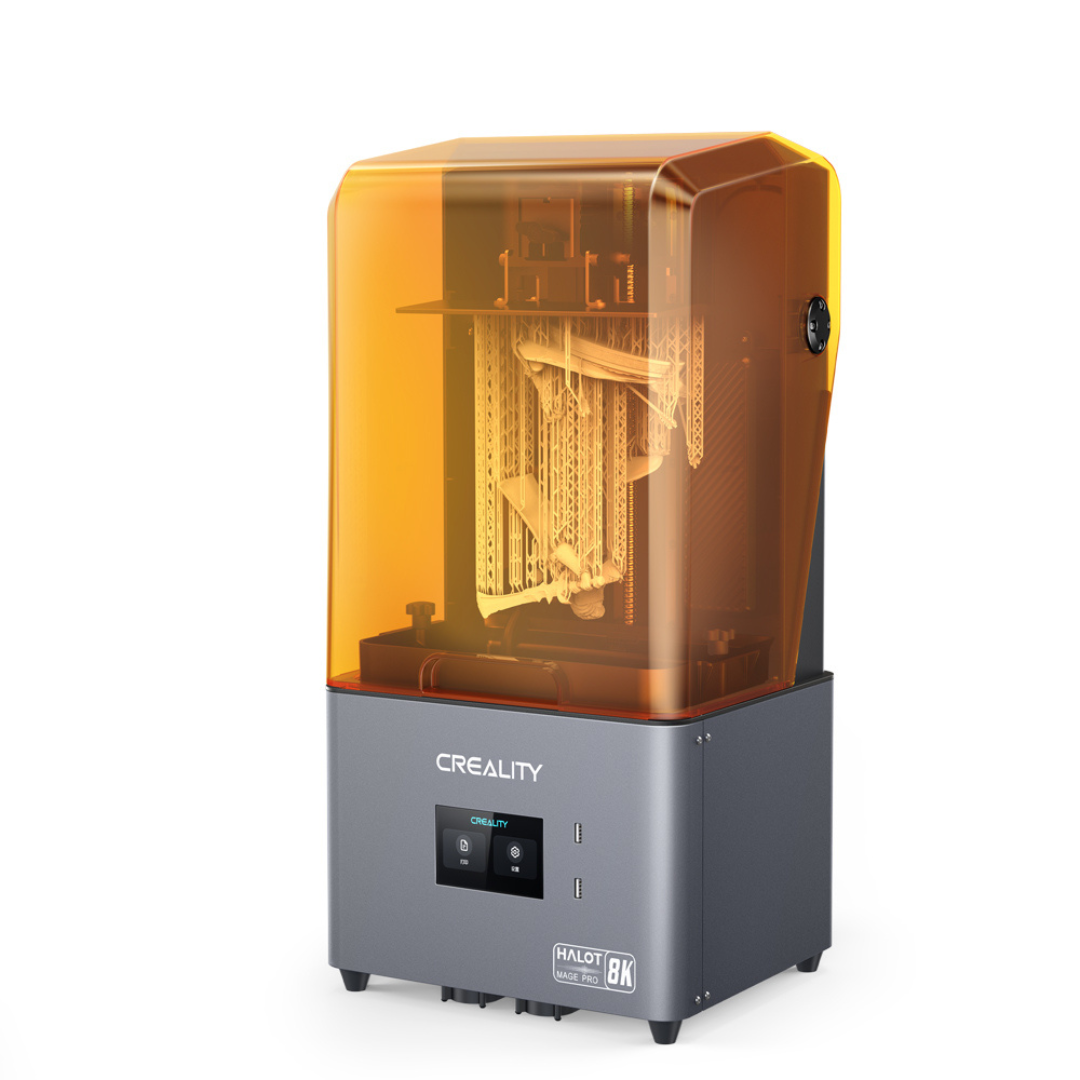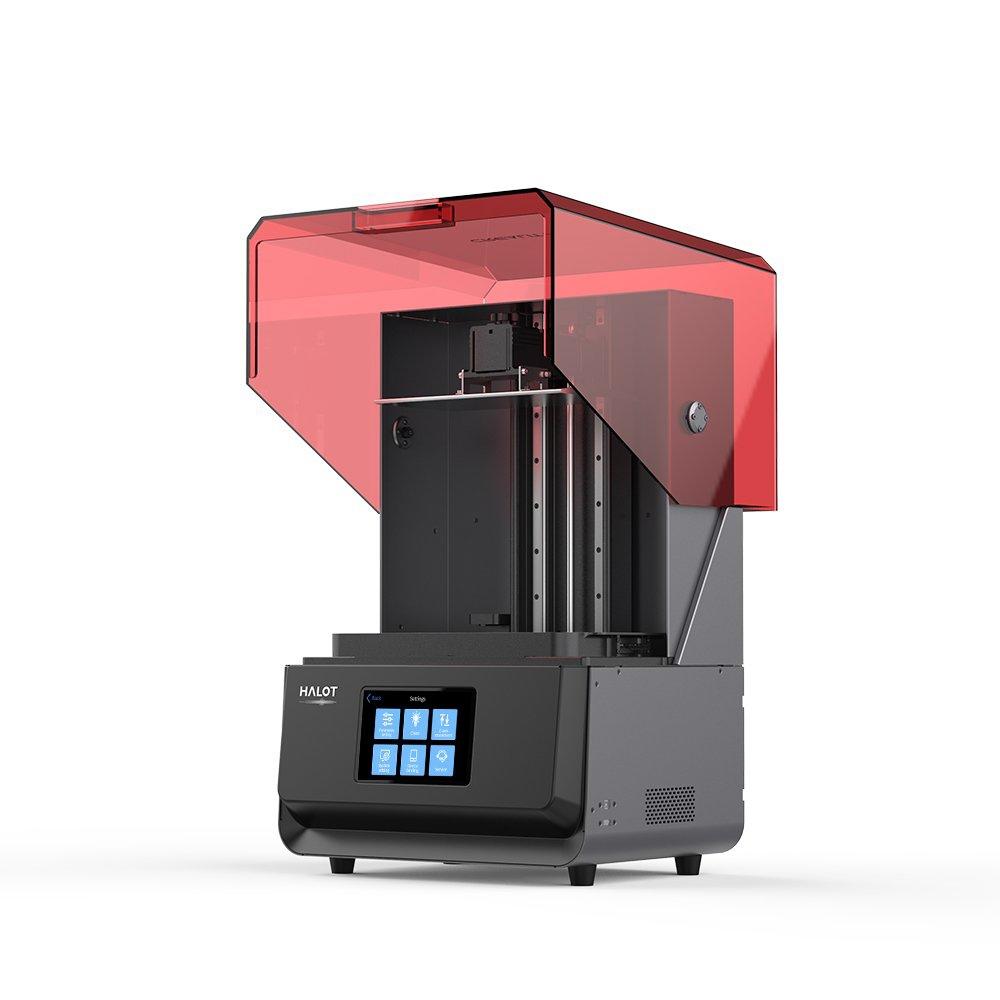Compare Halot Mage PRO vs Halot Max
Comparison between the best 3D printers
Choose the best 3D printer at the best price. The cheapest 3D printers are here.
Buy a 3D printer here with 3D Fila.
 |
 |
|
| Model | Halot Mage PRO |
Halot Max[BUY Halot Max] |
| Printing Material | Resin | Resin |
| Buy Resin for Creality 3D Halot Mage PRO | Buy Resin forCreality 3D Halot Max | |
| Estimated price | $479,00 | $3000,00 |
| Manufacturer | Creality 3D | Creality 3D |
| Release Year | 2023 | 2021 |
| Print Volume [mm] | 228x128x230 | 293x165x300 |
| Printer Size [mm] | 333x270x608 | 480x387x770 |
| Weight [kg] | 13,3 | 32,5 |
| Power Loss Recovery | NO | NO |
| Technology | LCD MSLA | LCD |
| Screen Resolution | 8k | 4k |
| Max Print Speed [s/layer] | 1 | 1 |
| Maximum Resolution [mm] | 0,01 | 0,03 |
| Processor | ||
| Display | Display touchscreen 4,3'' | Display touchscreen 5'' |
| Power Supply | 150 W | |
| Connectivity | USB / Wi-Fi / Ethernet | SD / USB / Wi-Fi |
| Operating systems | Windows, Mac, Linux | Windows, Mac, Linux |
| Date of registration in the system | 2023-12-18 | 2022-11-04 |
| Release date | 2023 | 2021 |
| Extra features | The Creality HALOT-MAGE PRO is an advanced resin 3D printer, distinguished by its high build quality and detailed prints. It uses SLA technology with an 8K LCD screen, providing refined prints in a 228x128x230mm area. It offers an impressive printing speed of up to 170mm/h. Its design includes an automatic resin management system and an integrated air purifier, making it easier to use and reducing odors. Although it requires post-print cleaning, its intuitive interface and connectivity options such as cloud and LAN make the HALOT-MAGE PRO a robust choice for professionals and enthusiasts. | The Halot Max printer stands out for its large print size (293 x 165 x 300 mm) and uses SLA technology. It has an integral light source for improved accuracy and a strong core with an advanced operating system. Its Z-axis module ensures high precision, supported by efficient slicing software. The machine offers online OTA updates and boasts an adjustable layer thickness between 10 and 200 microns. Its XY-axis resolution is 3840*2160, with 0.05 mm accuracy, and an integral 405nm light source. The printer includes a 5" touchscreen and multiple connectivity options, such as USB, Creality Cloud, and HALOT BOX WiFi. With cutting-edge technology, the Halot Max is ideal for printing small models with uniform precision, thanks to its self-developed lighting system and stable printing mechanism, which includes dual linear guides, ball screws, and an intelligent brake system. |
| Support for multiple colors and materials (AMS and CFS) | NO | NO |
Notes * |
||
| Cost-benefit | 8 / 10 | 5 / 10 |
| Hardware | 3.5 / 10 | 1 / 10 |
| Tela | . | . |
| Print volume | 3 / 10 | 3 / 10 |
| Performance | 9 / 10 | 9 / 10 |
| [BUY Halot Max] |
Conclusion |
| In comparing the Halot Mage PRO and Halot Max 3D printers, several key factors emerge that highlight the strengths and weaknesses of each model. The Halot Mage PRO offers an impressive combination of advanced technology and cost-effectiveness. With an 8K LCD screen, it delivers high-resolution prints and impressive performance metrics, making it suitable for both professionals and hobbyists. Its smaller footprint and lighter weight contribute to its appeal, especially for users with limited workspace. Additionally, features such as an automatic resin management system and an integrated air purifier enhance usability and comfort during operation. On the other hand, the Halot Max emphasizes larger print capacity and advanced precision. Despite its higher price point, which may deter some users, it compensates with expanded print dimensions and sophisticated technology aimed at achieving uniform accuracy. The inclusion of enhanced connectivity options and a user-friendly interface positions it well for those who prioritize capacity for larger projects and top-tier performance. In conclusion, if budget constraints are a primary consideration, the Halot Mage PRO emerges as the better option due to its cost-effective pricing and robust features. However, for users seeking higher print volume and advanced capabilities, the Halot Max may justify its premium price. Ultimately, the choice between these two printers should hinge on individual needs, preferences, and the specific use cases envisioned for 3D printing projects. |

